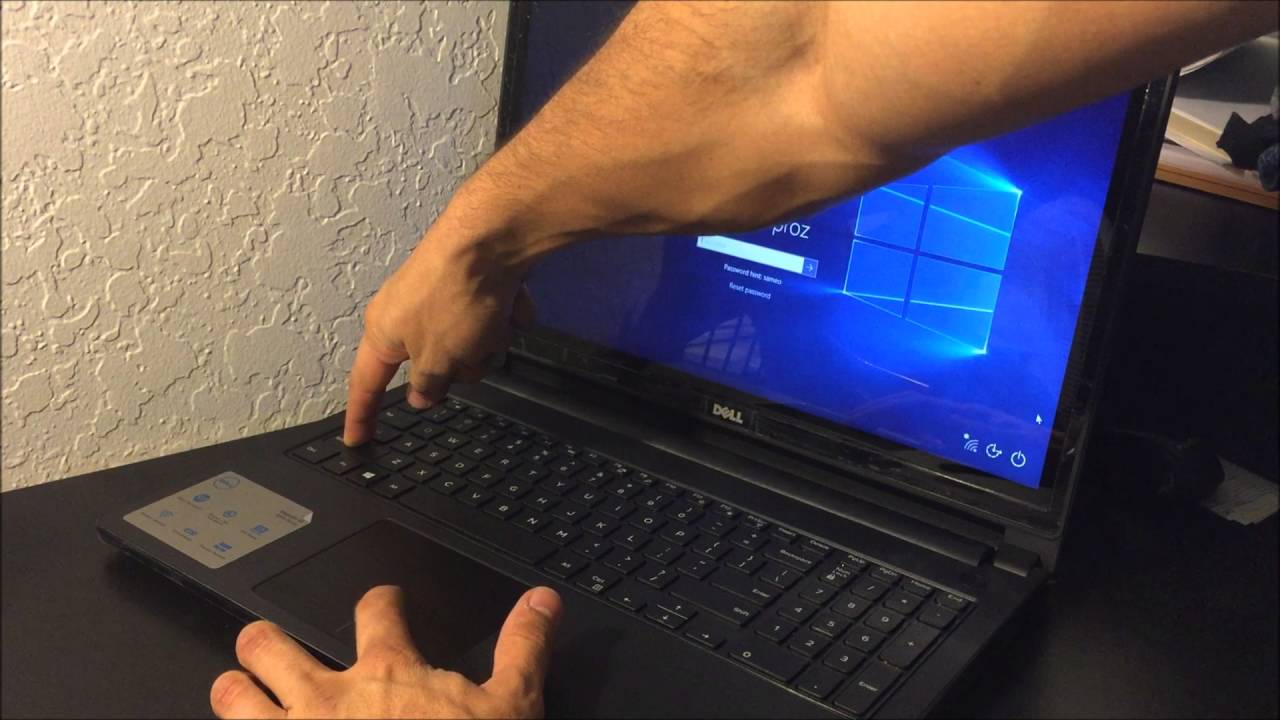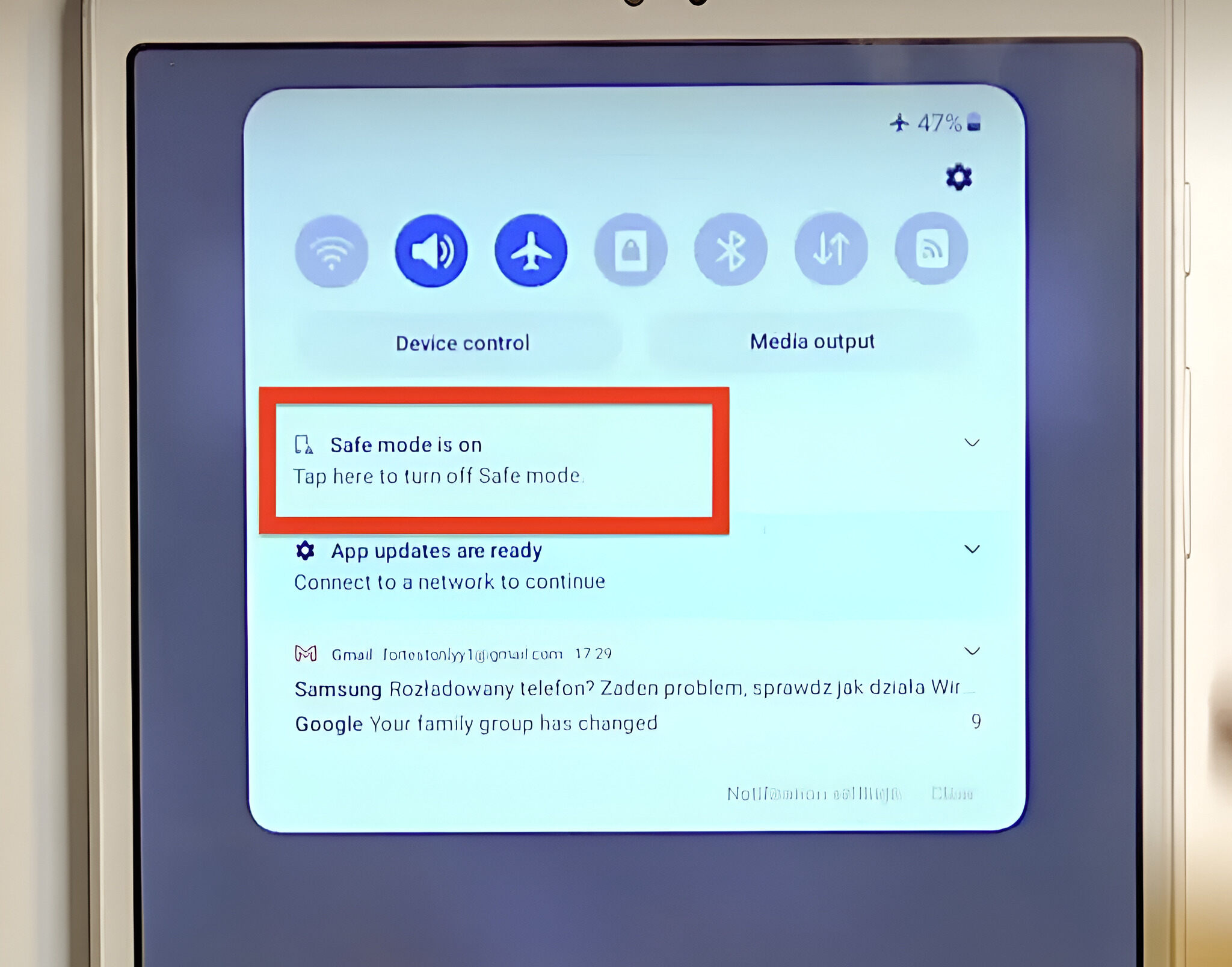Introduction
Money transfers have become an essential part of our modern lives, allowing us to send and receive funds quickly and securely. However, there are instances when a money transfer does not go as smoothly as we expect. It can be frustrating and confusing to discover that our money transfer did not go through successfully. In this article, we will explore some common reasons why a money transfer may fail and what you can do to resolve the issue.
When we initiate a money transfer, we rely on various intermediaries, including banks, financial institutions, and online payment services, to facilitate the process. While these systems are generally reliable, occasional hiccups can occur. Understanding the potential reasons for a failed money transfer can help you address the issue promptly and minimize any inconvenience.
In the following sections, we will discuss several common factors that could contribute to a failed money transfer. From insufficient funds in your account to technical issues with the money transfer service, we’ll provide insights into the possible causes and offer suggestions on how to resolve them.
It’s important to note that not all money transfer failures are due to the sender’s mistake. Sometimes external factors, such as bank restrictions or limitations, can impact the transfer process. By familiarizing yourself with these potential roadblocks, you can take appropriate steps to prevent them or quickly rectify any issues that might arise.
Now, let’s delve into the various reasons why a money transfer might not go as planned and explore possible solutions to ensure a successful transfer of funds.
Insufficient funds
One of the most common reasons why a money transfer fails is due to insufficient funds in the sender’s account. When you initiate a money transfer, the amount you wish to send is deducted from your account balance. If you do not have enough funds to cover the transfer amount, the transaction will not be completed successfully.
It is crucial to ensure that you have sufficient funds in your account before initiating a money transfer. Check your account balance and make sure that it is enough to cover the transfer amount, as well as any applicable fees. Keep in mind that there may be additional charges for international transfers or transfers to certain countries.
If your money transfer fails due to insufficient funds, you have a few options to rectify the situation. Firstly, you can deposit enough funds into your account to cover the transfer amount. Once your account balance is sufficient, you can initiate the transfer again.
Alternatively, you can explore other payment methods or sources of funds. For example, you might consider using a different bank account or credit card to complete the transfer. However, it is important to ensure that you have enough available credit or funds in the alternate account before proceeding with the transfer.
It is worth noting that some money transfer services may charge a fee or penalty for failed transfers due to insufficient funds. Therefore, it is always advisable to double-check your account balance and ensure that you have enough funds before initiating a transfer to avoid any unnecessary charges.
By being diligent and proactive in managing your account balance, you can avoid the disappointment and inconvenience of a failed money transfer due to insufficient funds.
Incorrect Account Details
Another common reason for a failed money transfer is providing incorrect account details. When initiating a transfer, it is crucial to enter the recipient’s account information accurately. This includes the recipient’s name, bank account number, and any other relevant details required by the money transfer service.
Even a small typo or missing digit in the account number can lead to a failed money transfer. The transfer will be rejected by the recipient’s bank or financial institution if the account details do not match with the provided information.
To avoid this issue, take extra care when entering the recipient’s account details. Double-check the account number, name, and any additional information required by the money transfer service. If possible, it is always a good idea to verify the account details directly with the recipient to ensure accuracy.
If you realize that you have provided incorrect account details after initiating the money transfer, you should act promptly. Contact the money transfer service or your bank to report the issue and seek guidance on how to resolve it. In some cases, they may be able to cancel the transfer or make necessary changes to the account details.
However, it is important to note that once a money transfer is initiated, it may not always be possible to retrieve the funds if they have been transferred to the wrong account. Therefore, it is crucial to be cautious and double-check all the provided account details to minimize the risk of a failed money transfer due to incorrect information.
By ensuring the accuracy of the recipient’s account details, you can increase the likelihood of a successful money transfer and avoid unnecessary complications or delays.
Technical Issues with the Money Transfer Service
Despite the advancements in technology, technical issues can still occur with money transfer services. These issues may result in a failed money transfer or other disruptions in the transfer process that can be frustrating for senders and recipients alike.
Common technical issues that can affect money transfers include system glitches, server downtime, or network connectivity problems. These issues can prevent the smooth processing of transfers, leading to delays or failed transactions.
When encountering technical issues with a money transfer service, it is essential to be patient and give the service provider time to resolve the problem. In many cases, such issues are temporary and quickly rectified by the service provider’s technical team.
If you encounter a technical issue with a money transfer, it is advisable to reach out to the customer support team of the money transfer service. They will be able to assist you in troubleshooting the problem and provide updates on the status of the transfer.
During such situations, it is also important to keep records of any communication or reference numbers provided by the customer support team. This documentation will serve as evidence in case you need to follow up or seek compensation for any inconvenience caused by the technical issue.
In some cases, the service provider may offer alternative methods to complete the transfer, such as initiating the transfer through a different channel or using a different system. They may also provide reimbursement for any fees incurred due to the technical issue or compensate for any inconvenience caused.
While technical issues with money transfer services can be frustrating, they are often temporary and resolved in a timely manner. By staying informed and communicating with the customer support team, you can navigate through such challenges and ensure a successful money transfer.
Bank Restrictions or Limitations
One of the reasons why a money transfer may fail is due to restrictions or limitations imposed by the sender’s or recipient’s bank. Banks have various security measures in place to protect their customers from fraudulent activities and ensure compliance with regulations.
Some common bank restrictions or limitations that can hinder a money transfer include daily transaction limits, transfer limits to certain countries or regions, or restrictions on certain types of transactions. These restrictions are typically put in place to prevent unauthorized or suspicious transactions from occurring.
If your money transfer fails due to bank restrictions or limitations, it is important to contact your bank to understand the reason for the failure. They can provide you with specific details on the restrictions or limitations that apply to your account or transaction.
Depending on the nature of the restriction, you may need to work with your bank to have it lifted or modified. For example, if you frequently need to send larger amounts of money, you may need to request an increase in your transaction limit. This process may involve providing additional identification or completing the required paperwork as per your bank’s policies.
It is also important to ensure that the recipient’s bank does not have any specific restrictions or limitations that may prevent the successful completion of the money transfer. If the recipient’s bank has such restrictions in place, you may need to explore alternative transfer methods or consult with the recipient to find a suitable solution.
Understanding the bank restrictions or limitations beforehand can help you plan your money transfers more effectively. It is always advisable to contact your bank or review their policies to ensure compliance with any applicable restrictions or limitations.
By staying informed and working closely with your bank, you can navigate through any restrictions or limitations and ensure a successful and hassle-free money transfer.
Suspicion of Fraud
In order to protect customers from potential fraudulent activities, financial institutions and money transfer services have robust security measures in place. If a money transfer is flagged as suspicious or potentially fraudulent, it may be halted or rejected to safeguard both the sender’s and recipient’s funds.
There are various factors that can trigger suspicion of fraud during a money transfer. These can include unusual or large transfer amounts, transfers to high-risk countries or regions, discrepancies in the sender’s or recipient’s information, or patterns of suspicious activity detected by the institution’s fraud detection systems.
If your money transfer is flagged as suspicious, it is crucial to communicate with the financial institution or money transfer service to address the issue. You may be required to provide additional documents or information to verify the legitimacy of the transfer and prove that it is not related to any fraudulent activities.
It is important to remain patient and cooperative during this process, as the institution’s primary goal is to protect your funds and prevent any potential fraud. Be prepared to provide any necessary documentation, such as identification documents, invoices, or proof of the transaction’s purpose, to support your case.
In some cases, the institution may conduct further investigations before allowing the transfer to proceed. This may take some time, but it is crucial to ensure the security and integrity of the transfer process.
If you suspect fraudulent activity on your account or if you believe a legitimate transfer is being wrongly flagged as suspicious, contact your financial institution immediately. They will be able to guide you through the necessary steps to resolve the issue and ensure a successful money transfer.
By being vigilant and proactive in addressing any suspicions of fraud, you can help protect your funds and maintain the security of the money transfer process.
Incorrect Currency or Exchange Rate Issues
Money transfers involving multiple currencies can sometimes encounter problems related to incorrect currency selection or exchange rate issues. These issues can lead to a failed money transfer or result in an unexpected difference in the amount received by the recipient.
When initiating a money transfer, it is essential to select the correct currency for both the sender and recipient. Choosing the wrong currency can result in the transfer being rejected or the funds being converted into an incorrect currency, leading to confusion and potential financial losses.
Additionally, exchange rate fluctuations can impact the final amount received by the recipient. Exchange rates play a crucial role in the conversion of funds from one currency to another. If there are significant fluctuations in the exchange rate between the time of initiation and completion of a money transfer, the final amount received may differ from the initially estimated amount.
To avoid incorrect currency or exchange rate issues, it is important to carefully review all the details before confirming a money transfer. Double-check the currency selection for both the sender and recipient, ensuring that they align with the intended transaction.
When it comes to exchange rates, it is advisable to stay updated and be aware of any fluctuations that may affect the transfer. Online currency converters or financial news sources can provide valuable information on current exchange rates. This knowledge will help you estimate the expected amount to be received and allow for better planning and preparation.
If you encounter a money transfer failure or notice discrepancies in the received amount due to incorrect currency or exchange rate issues, it is important to contact the money transfer service or your bank. They will be able to assist you in resolving the issue and explain any adjustments made due to currency conversion or exchange rate differences.
By being diligent in selecting the correct currency and staying informed about exchange rates, you can minimize the risk of encountering incorrect currency or exchange rate issues during a money transfer.
Delayed Processing or Recipient’s Bank Processing Time
Sometimes, a money transfer may experience a delay in processing, which can be attributed to various factors. These delays can occur at the sender’s bank, the money transfer service, or even the recipient’s bank. Understanding the reasons behind delayed processing or the recipient’s bank processing time can help manage expectations and alleviate concerns.
One of the common reasons for delayed processing is the verification and security checks conducted by the sender’s bank or the money transfer service. These checks are in place to ensure the legitimacy of the transaction, protect against fraud, and comply with regulatory requirements. Although these checks may cause some delays, they are essential for maintaining the security and integrity of the money transfer process.
Another factor that can contribute to delayed processing is the recipient’s bank processing time. Each bank has its own internal procedures and timelines for processing incoming transfers. It is important to remember that the recipient’s bank may have specific cut-off times and processing schedules, which can result in a delay, especially if the transfer is initiated close to their cut-off time.
If you notice a delay in the processing of your money transfer, it is recommended to reach out to the money transfer service or your bank to inquire about the status. They can provide you with updates on the progress of the transfer and any potential reasons for the delay.
In some cases, it may be necessary to contact the recipient’s bank directly to understand their processing timeframes and requirements. This direct communication can help identify any potential issues or provide clarity on the expected timeline for the transfer to be credited to the recipient’s account.
While delays in processing can be frustrating, it is important to remain patient and allow the necessary time for the transfer to be completed. However, if the delay persists for an unreasonable period, it is advisable to escalate the matter with the money transfer service or your bank to ensure that appropriate actions are taken to resolve the issue.
By being aware of the potential reasons for delayed processing and the recipient’s bank processing time, you can better manage your expectations and mitigate any concerns that may arise during the money transfer process.
Maxed Out Transfer Limit
One of the reasons for a failed money transfer is when the transfer limit set by the sender’s bank or money transfer service has been reached. Financial institutions often impose maximum transfer limits to prevent potential misuse or unauthorized transactions.
When initiating a money transfer, it is important to be aware of the transfer limits imposed by your bank or the money transfer service you are using. These limits can vary depending on factors such as your account type, transaction history, or the country involved in the transfer.
If your transfer fails due to reaching the maximum transfer limit, you have a few options to address the situation. Firstly, you can contact your bank or the money transfer service to inquire about increasing your transfer limit. They may require additional verification or documentation to assess your eligibility for a higher limit.
An alternative option is to split the transfer into multiple smaller transactions that fall within the allowed transfer limit. However, keep in mind that there may be additional fees associated with multiple transfers, so be sure to consider these costs when deciding on the best approach.
It is important to note that some banks or money transfer services may have specific policies regarding maximum transfer limits, and they may not be flexible in increasing them. In such cases, you may need to explore alternative transfer methods or consider using a different service provider that offers higher transfer limits.
Understanding the transfer limit in advance can help you plan your money transfers more effectively. If you anticipate the need to transfer larger amounts, it is advisable to discuss your requirements with your bank or research different money transfer services that align with your needs.
By being aware of and proactive about transfer limits, you can ensure smoother money transfers and avoid the inconvenience of a failed transfer due to reaching the maximum allowed limit.
Conclusion
Money transfers are an essential aspect of our financial transactions, allowing us to send funds to family, friends, or business partners quickly and securely. However, there are various factors that can contribute to a failed money transfer. By understanding these common reasons and taking appropriate measures, you can minimize the likelihood of encountering such issues and ensure successful transfers.
Insufficient funds in the sender’s account can lead to a failed money transfer. It is important to double-check your account balance before initiating a transfer and ensure that you have enough funds to cover the transfer amount.
Providing incorrect account details can also result in a failed transfer. Pay close attention when entering the recipient’s account information and verify the details to avoid any typos or errors.
Technical issues with the money transfer service can cause delays or failures. In such cases, it is recommended to remain patient and reach out to customer support for assistance in resolving the issue.
Bank restrictions or limitations can hinder a money transfer, and it is crucial to understand and comply with any restrictions imposed by your bank or the recipient’s bank.
Suspicion of fraud can lead to a money transfer being halted. Stay vigilant and cooperate with your financial institution or money transfer service to address any concerns and provide necessary documentation to verify the legitimacy of the transfer.
Incorrect currency selection or exchange rate issues can result in discrepancies in the transferred amount. Ensure the correct currency is selected and stay informed about exchange rates to avoid unexpected differences in the received amount.
Delayed processing or the recipient’s bank processing time can cause a transfer to take longer than expected. Contact the money transfer service or your bank for updates and communicate with the recipient’s bank if necessary.
Lastly, being mindful of the maximum transfer limit set by your bank or money transfer service can help prevent transfers from being rejected. Consider exploring options to increase your limit or splitting the transfer into smaller transactions if necessary.
Having a thorough understanding of these common reasons for failed money transfers can help you navigate the transfer process more successfully. By double-checking details, staying informed, and being proactive in addressing any issues that may arise, you can ensure smooth and hassle-free money transfers in the future.

























